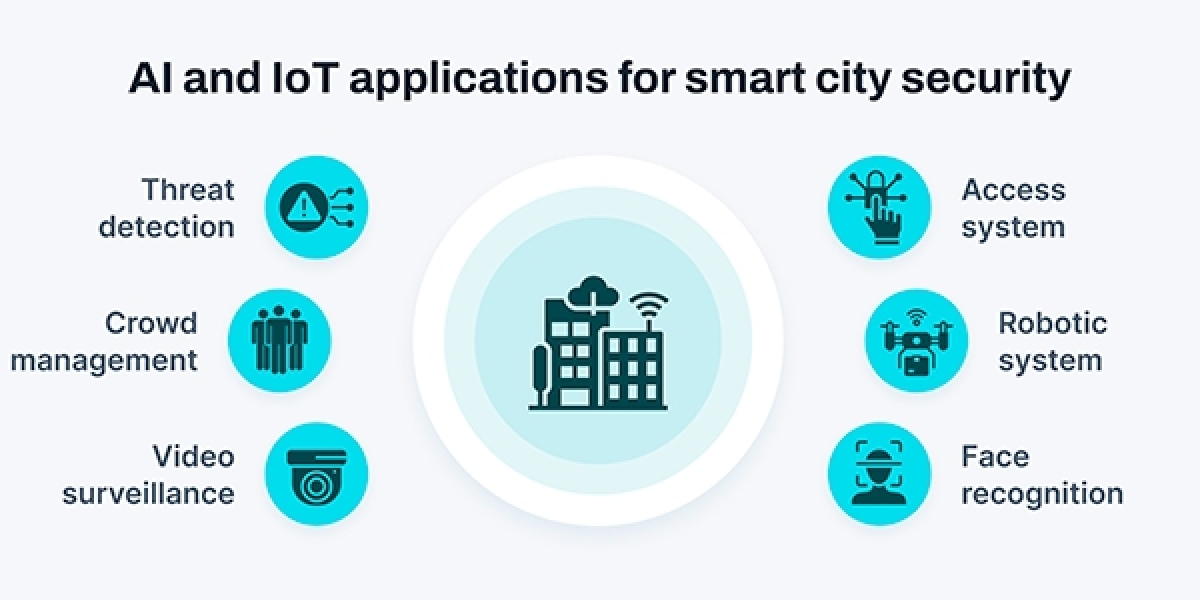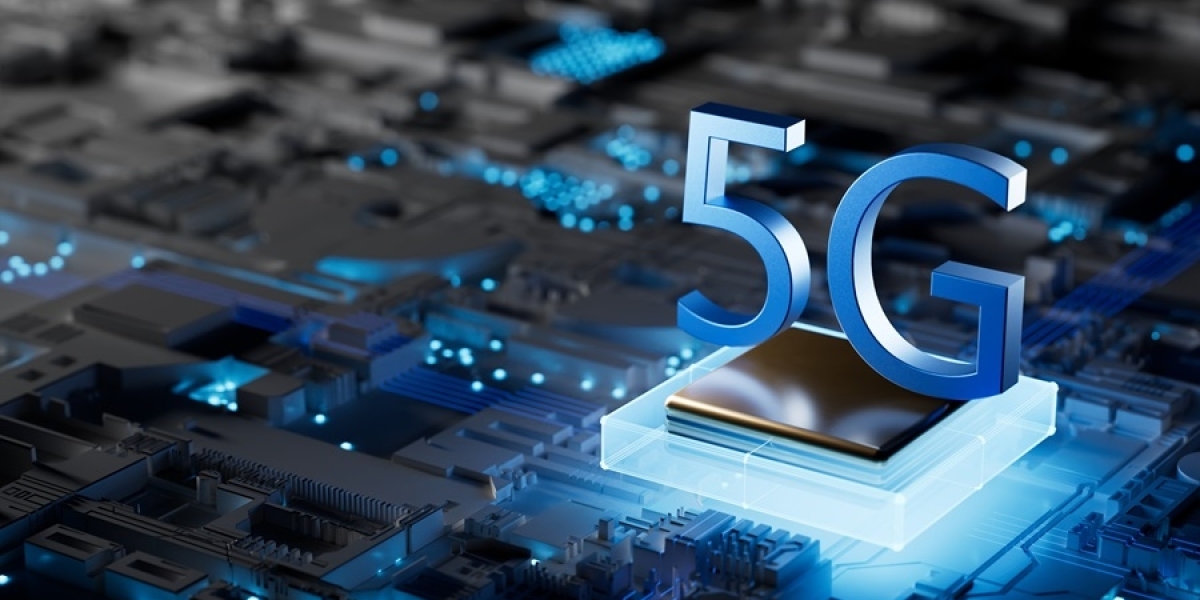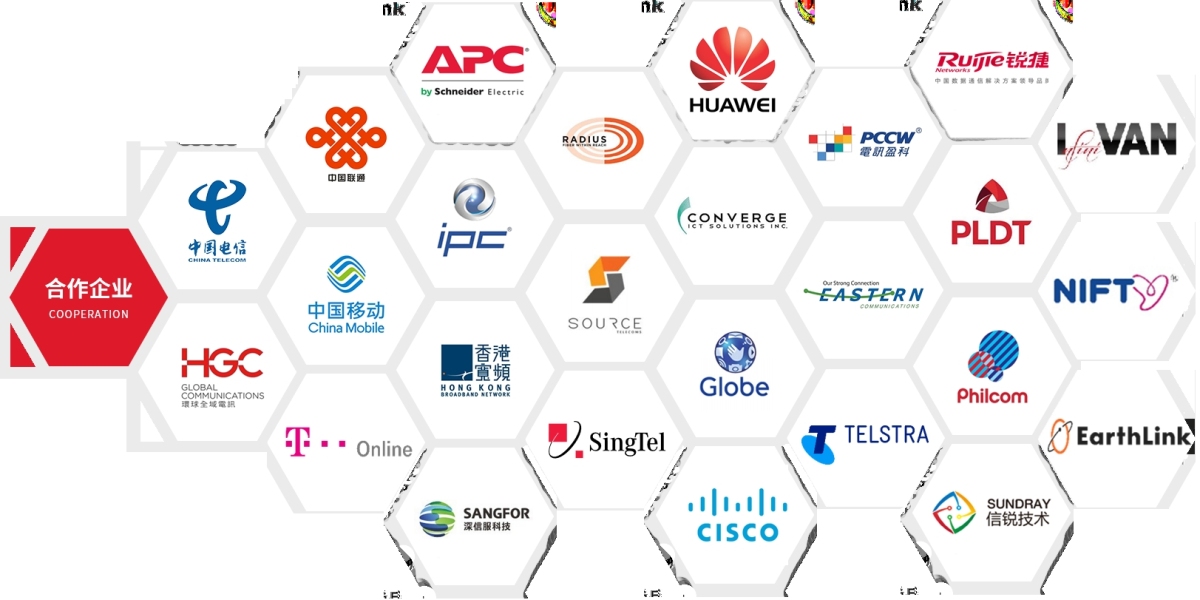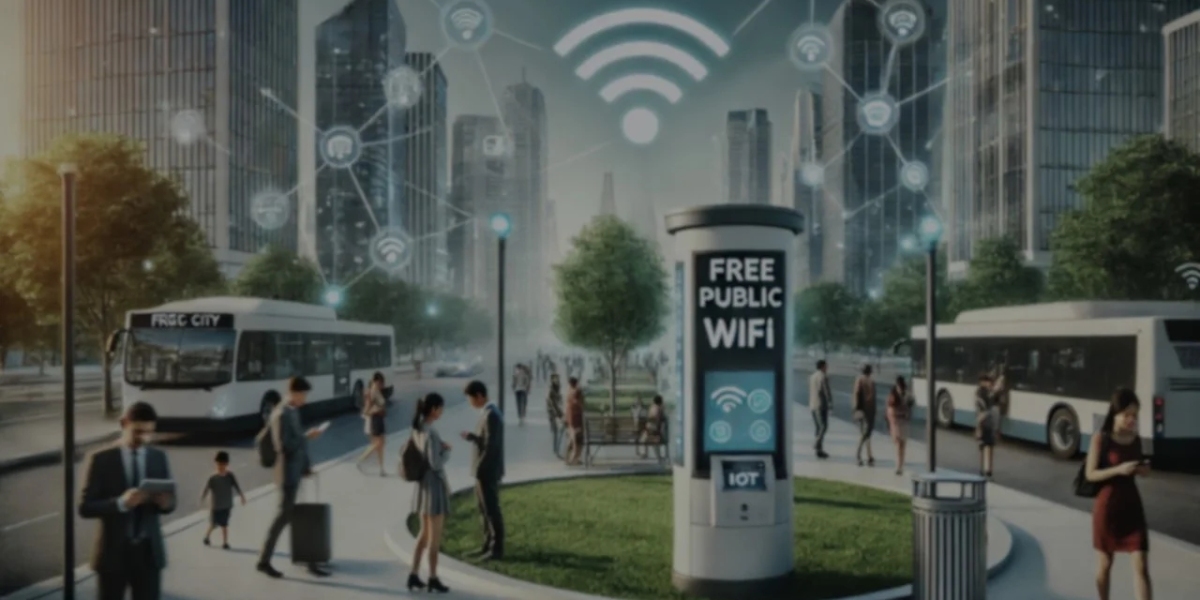Introduction: Why Smart Surveillance Matters
Key Technologies Behind Modern Surveillance
Benefits for Urban Safety and Governance
Philippine Use Cases and City-Level Projects
Integration with Emergency and Disaster Response
Data Privacy, Legal Frameworks, and Ethics
Steps for Deploying a City Surveillance Network
Frequently Asked Questions (FAQs)
1. Introduction: Why Smart Surveillance Matters
As cities grow more complex and densely populated, ensuring public safety has become a major challenge for local governments. Traditional methods of surveillance — such as isolated CCTV cameras monitored manually — are no longer sufficient in addressing the evolving threats of crime, traffic incidents, and emergencies.
This is where smart surveillance systems step in.
Powered by artificial intelligence (AI), internet of things (IoT) devices, and cloud computing, modern surveillance systems offer far more than passive video recording. These smart solutions can analyze live video feeds, detect anomalies, recognize faces or license plates, and even predict potential incidents before they escalate.
In a city context, smart surveillance enables:
Real-time monitoring of critical areas such as highways, schools, government buildings, and public markets
Automated alerts for crimes, traffic violations, or crowd build-ups
Integrated emergency response coordination between LGUs, police, fire, and disaster offices
Evidence gathering for investigations, with searchable, timestamped video archives
For local governments in the Philippines, especially those in urban centers or fast-developing municipalities, smart surveillance is a vital component of the broader “Safe City” and “Smart City” agenda. It enables faster response times, more efficient law enforcement, and a greater sense of public trust and safety.
Moreover, smart surveillance is not just about enforcement — it’s about urban management. Whether used for monitoring floods, crowd control during festivals, or optimizing traffic, these systems provide the visual data backbone that cities need to function intelligently.
As affordability and cloud accessibility improve, even mid-sized LGUs can now deploy surveillance platforms that once required national-level infrastructure. When paired with ethical guidelines and citizen transparency, smart surveillance becomes a transformative force in making cities safer, more responsive, and more livable.
Key Technologies Behind Modern Surveillance
Smart surveillance systems are built on a foundation of interconnected, intelligent technologies that go far beyond traditional closed-circuit television (CCTV). These innovations enable automated analysis, predictive insights, and seamless coordination across departments and agencies.
Here are the core technologies powering modern urban surveillance:
1. Internet of Things (IoT) Devices
IoT enables physical surveillance devices — like cameras, motion sensors, and audio detectors — to transmit data to central command centers in real time.
Examples of IoT in surveillance:
Smart CCTV cameras with built-in connectivity
Sound sensors detecting gunshots, explosions, or screams
Flood or smoke detectors that trigger visual alerts
Environmental sensors linked to visual surveillance (e.g., air quality)
2. High-Definition IP Cameras
Unlike analog CCTVs, modern IP (Internet Protocol) cameras deliver high-resolution video that is easier to analyze and store in the cloud.
Benefits:
Facial and license plate clarity even at night
Zoom, tilt, and rotate remotely
Lower cost of wiring and infrastructure
Many cameras also include edge computing, where basic AI analysis (like motion detection) happens on the device itself.
3. Artificial Intelligence (AI) and Computer Vision
AI transforms passive video into actionable intelligence by automatically detecting unusual or risky behavior.
AI-powered capabilities include:
Facial recognition for missing persons or suspects
License plate recognition for stolen vehicles
Intrusion detection (e.g., entry into restricted areas)
Behavior analysis (e.g., loitering, crowd formation, object abandonment)
Real-time threat scoring and alert generation
AI can significantly reduce the need for human operators to watch every camera feed.
4. Video Management Systems (VMS)
VMS software aggregates, stores, and manages camera feeds from across the city in one secure platform. It allows authorized personnel to:
Search footage by time, event, or location
Control PTZ (pan-tilt-zoom) cameras
Flag incidents and generate video-based reports
Integrate with other systems like traffic lights or alarm triggers
5. Cloud Storage and Analytics Platforms
Instead of maintaining expensive on-premise servers, LGUs can use cloud-based video storage and analytics platforms to archive footage and run AI analysis at scale.
Advantages:
Scalable storage with lower upfront cost
24/7 remote access to feeds and records
Automated backups and disaster recovery
Centralized access for multi-agency collaboration
6. Command and Control (C2) Centers
Surveillance systems feed into municipal command centers where security, traffic, disaster, and health agencies monitor urban activity together.
Features include:
Real-time dashboard displays of alerts and camera feeds
Integration with GIS mapping and emergency dispatch
Predictive analytics and simulations for better preparedness
7. Mobile Surveillance and Drone Integration
For flexible, fast deployment during events or emergencies, LGUs can also use mobile camera units, body-worn cameras, and drones.
Use Cases:
Aerial monitoring of festivals, fires, or flooding
Wearable video for traffic enforcers or barangay tanods
Temporary monitoring in remote barangays or informal settlements
By combining these technologies, cities create a multi-layered surveillance ecosystem that not only detects and records — but also predicts and prevents.
Benefits for Urban Safety and Governance
Smart surveillance systems offer cities more than just enhanced security — they provide actionable insights, better governance, and improved citizen experiences. When implemented effectively, these systems become integral to a city's digital infrastructure and day-to-day management.
1. Enhanced Public Safety
The most direct benefit of smart surveillance is the real-time protection of life and property. AI-enabled cameras and sensors can detect suspicious activity and immediately alert authorities, reducing response times and preventing escalation.
Impact:
Faster detection of crimes such as theft, assault, or vandalism
Immediate response to emergencies (e.g., fire, accidents, public disorder)
Deterrence effect from visible, intelligent monitoring
2. Support for Law Enforcement and Investigations
Smart surveillance systems assist police and barangay security units by providing high-quality evidence and automated identification tools.
Applications include:
Facial recognition for wanted individuals
Timestamped video for court admissible evidence
Pattern recognition for serial offenders or incidents
This reduces reliance on eyewitness testimony and speeds up case resolutions.
3. Improved Traffic Management
Cameras integrated with traffic management systems can detect congestion, monitor intersections, and issue automated violation notices.
Benefits:
Real-time traffic optimization (adaptive signal controls)
License plate recognition for illegal parking or overspeeding
Incident detection (e.g., stalled vehicles, accidents)
Traffic flow improvements translate to reduced emissions and better commuter satisfaction.
4. Disaster Risk Reduction and Emergency Response
In disaster-prone areas, smart surveillance tools provide early warnings and situational awareness during calamities.
Use Cases:
Monitoring rising flood levels in low-lying zones
Drones and CCTVs feeding visuals to command centers
Crowd management during evacuation efforts
These technologies enable preemptive action, not just reactive measures.
5. Crowd Control and Event Monitoring
Cities hosting festivals, rallies, or high-profile events can use temporary and mobile surveillance systems to monitor crowd size, movement, and safety risks.
Advantages:
Prevent stampedes or panic situations
Detect unattended bags or abnormal behavior
Coordinate police and medics on-ground using live video
6. Data-Driven Urban Planning
Foot traffic analysis, heatmaps, and incident trends derived from smart cameras help urban planners and city administrators make informed infrastructure decisions.
Examples:
Identifying high-risk pedestrian crossings
Determining where to install more lighting or signage
Adjusting zoning based on observed human activity patterns
7. Transparency and Accountability
Surveillance promotes accountability in both the public and government sectors. For example:
Barangay officials wearing body cams during inspections
Footage validation for law enforcement conduct
Video logs of contractor activity on government projects
When publicly disclosed or audited properly, it builds public trust.
8. Operational Efficiency for LGUs
Automating surveillance tasks frees up human resources. Instead of monitoring 100 screens, staff respond only to AI-generated alerts — increasing productivity and reducing fatigue.
Operational Gains:
24/7 automated monitoring without overtime costs
Centralized coordination among departments
Reduced reliance on paper-based or verbal reporting
By transforming surveillance into an intelligent system, cities move from passive recording to proactive protection and smart decision-making — vital traits of a truly digital, citizen-centric government.
Philippine Use Cases and City-Level Projects
Across the Philippines, numerous local government units (LGUs) have already begun deploying smart surveillance systems as part of their push toward safer, smarter, and more responsive cities. These real-world implementations showcase how surveillance technology is improving governance and public service.
1. Quezon City: Command Center and CCTV Expansion
Quezon City operates one of the most advanced Integrated Command and Control Centers (IC3) in the country, linked with over 5,000 high-definition CCTV cameras across barangays, roads, and public facilities.
Features include:
Facial recognition and license plate reading
Live video monitoring of crime-prone areas
Integration with disaster response and emergency hotlines
Public transport monitoring via GPS and live feeds
The system was crucial during COVID-19 lockdown enforcement and continues to support urban management efforts.
2. Davao City: Safe City Program
Davao’s Public Safety and Security Command Center (PSSCC) is considered a national model. It integrates over 1,000 surveillance cameras, police, traffic, and emergency services under one digital roof.
Highlights:
Crime detection rates improved via facial recognition AI
Footage used in successful crime resolutions and prosecutions
24/7 monitoring of intersections, terminals, and public plazas
3. Baguio City: Smart Traffic Surveillance
As a tourism and education hub, Baguio deployed smart traffic cameras to manage congestion and ensure public order during peak seasons.
Features include:
License plate detection and violation tagging
Data-backed adjustments of traffic light schedules
Real-time traffic visualization through digital dashboards
4. Iloilo City: Disaster and Flood Monitoring
Iloilo’s smart city initiative includes cloud-connected surveillance systems that double as disaster early warning tools, especially for flooding.
Applications:
River and creek monitoring with AI-based flood detection
Integration with local DRRMO for evacuation planning
Alert systems triggered by water level sensors and camera feeds
5. Lapu-Lapu City: Mobile Surveillance Units
In support of tourism and security, Lapu-Lapu City has deployed mobile surveillance vans equipped with wireless cameras and satellite uplinks for remote or high-profile event monitoring.
Benefits:
On-the-ground situational awareness during festivals
Police coordination through live streaming
Temporary deployment in barangays or crime hotspots
6. Valenzuela City: Barangay-Level CCTV Networks
Valenzuela took a bottom-up approach, providing barangays with surveillance kits linked to the city’s centralized system.
Approach:
Community-level monitoring with AI flagging
Use of footage in local investigations
Capacity-building for barangay staff on camera handling
7. National Agencies and DICT Support
The DICT, DILG, and PNP have also launched joint programs to help LGUs secure funding, training, and technology partners for surveillance initiatives.
Support Includes:
Procurement assistance and public bidding templates
Cloud infrastructure hosting via GovCloud
Cybersecurity and data protection training
These Philippine use cases highlight the scalability of smart surveillance — from megacities to barangays — and its potential to deliver real, measurable improvements in security, traffic, emergency response, and public confidence.
Integration with Emergency and Disaster Response
In the face of growing climate risks, natural disasters, and urban emergencies, smart surveillance systems have become a critical tool for Disaster Risk Reduction and Management (DRRM) in cities. When integrated properly, these systems enhance situational awareness, accelerate response, and ultimately save lives.
1. Real-Time Hazard Detection
Smart cameras and sensors deployed in flood-prone areas, bridges, rivers, and highways can detect abnormal events and trigger immediate alerts.
Use Cases:
Flood detection: Cameras paired with water level sensors automatically flag rising waters and alert command centers
Landslides or road collapses: Motion-triggered video helps assess remote road conditions
Fires or smoke: AI-driven thermal cameras detect heat signatures and trigger fire alarms
These capabilities ensure that early warning signs are not missed, even when human monitors are unavailable.
2. Coordinated Emergency Response via Command Centers
Municipal or provincial Command and Control Centers (C3s) serve as the nerve center for disaster coordination. Surveillance feeds are integrated with:
GIS maps showing real-time hazard zones
Emergency service dispatch (ambulance, fire, rescue)
Weather and geohazard data (from PAGASA, PHIVOLCS, etc.)
This centralized visibility enables LGUs to deploy the right resources faster, prioritize rescue areas, and reduce duplication of efforts.
3. Monitoring Evacuation Routes and Shelters
During typhoons or other mass evacuations, smart surveillance cameras can monitor:
Evacuation route congestion
Conditions inside temporary shelters
Crowd movement patterns for safety and health protocols
This ensures orderly evacuation, crowd control, and efficient allocation of relief services.
4. Post-Disaster Assessment and Recovery
After a disaster, surveillance footage becomes essential for:
Damage assessment reports
Audit documentation of response actions
Insurance and national relief claims
Community feedback and transparency reviews
Cameras can also monitor the rebuilding process and compliance of contractors.
5. Integration with Early Warning Systems (EWS)
Smart surveillance can be synchronized with SMS alerts, sirens, and social media notifications, forming a multi-channel disaster alert system.
Example Flow:
Sensor detects rising flood > Camera confirms > AI classifies severity > System pushes alert to barangay phones, sirens, and Facebook page.
This automated pipeline reduces human error and ensures fast public communication.
6. Remote Area Coverage via Drones and Wireless Cameras
For mountainous or island barangays, LGUs can deploy:
Drones with HD and thermal cameras for live aerial views
Solar-powered wireless CCTVs in areas without electricity
Mobile surveillance vans with satellite uplinks
This provides visual intelligence in hard-to-reach areas, supporting rescue teams and decision-makers alike.
Smart surveillance, when linked to DRRM systems, transforms passive video into life-saving insights — turning every camera into a potential first responder.
Data Privacy, Legal Frameworks, and Ethics
While smart surveillance systems offer immense benefits for urban safety, they also raise critical questions around privacy, transparency, legal compliance, and ethical governance. Without clear frameworks, surveillance can easily become intrusive or abused — eroding public trust instead of enhancing it.
1. Data Privacy in the Philippine Context
The Data Privacy Act of 2012 (RA 10173) mandates that any institution — including LGUs — collecting personal data must ensure:
Proper consent (where required)
Secure collection, processing, and storage
Access restrictions and data retention limits
Breach notification protocols
Implications for LGUs using smart surveillance:
Facial recognition data is considered sensitive personal information
Storage systems (local or cloud) must be encrypted and access-controlled
LGUs must designate a Data Protection Officer (DPO) and conduct Privacy Impact Assessments (PIAs)
2. Legal Basis for Government Surveillance
In the Philippines, LGUs are empowered under the Local Government Code and various DILG circulars to ensure public safety — which includes installing surveillance systems.
However, legal boundaries must be respected:
Cameras in public spaces are allowed
Recording in private or sensitive areas (e.g., restrooms, private homes) is prohibited
Audio recording may be restricted unless consented to or court-ordered
3. Responsible Use of AI and Facial Recognition
While AI-based facial recognition is powerful, it must be used responsibly to avoid:
Racial, age, or gender bias in AI models
Misidentification of innocent individuals
Unwarranted tracking of political or activist groups
Best Practices Include:
Using only DICT-accredited AI providers
Setting strict rules for access and usage of recognition logs
Providing citizens the ability to request data access or correction
4. Transparency and Public Trust
Transparency is key to citizen support for surveillance systems. LGUs should:
Publish privacy policies on official websites
Conduct public consultations before installing new surveillance tools
Place visible signage in monitored areas indicating surveillance is in use
Disclose data retention periods and handling procedures
These efforts reduce suspicion and build confidence in government integrity.
5. Ethical Governance and Oversight
Beyond legality, LGUs must ask: Are we using surveillance ethically?
Ethical governance principles include:
Necessity: Only deploy surveillance where risks justify it
Proportionality: Avoid blanket monitoring when targeted observation will suffice
Accountability: Maintain audit trails and allow oversight by local councils or civil society groups
Equity: Ensure surveillance does not disproportionately target certain neighborhoods or communities
6. Cybersecurity Considerations
Surveillance systems are frequent targets of hacking or misuse. LGUs must:
Regularly update firmware and passwords on cameras
Use end-to-end encrypted cloud storage
Limit access to feeds and archives to trained personnel
Conduct penetration tests and security audits
Smart surveillance must walk the tightrope between security and civil liberty. With strong legal safeguards, transparency mechanisms, and ethical oversight, cities can leverage these tools responsibly — protecting both lives and rights.









